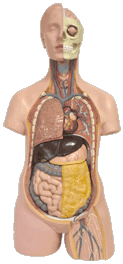At WiseGEEK, we're committed to delivering accurate, trustworthy information. Our expert-authored content is rigorously fact-checked and sourced from credible authorities. Discover how we uphold the highest standards in providing you with reliable knowledge.
What is Fanconi Anemia?
Fanconi anemia is a very rare genetic disorder that affects the production and release of new blood cells from bone marrow. Infants who are born with the disease often have skin, hand, and face defects, and many of their vital organs may be impaired. By childhood and early adolescence, patients are at an increased risk of developing leukemia and other potentially life-threatening cancers. There is currently no proven cure for Fanconi anemia, though bone marrow transplants, surgery, and medications can help relieve symptoms and improve a person's chances of survival into adulthood.
Doctors classify Fanconi anemia as an autosomal recessive disorder, which means that both parents must pass on a particular defective gene in order for their child to inherit the condition. When Fanconi anemia is present, bone marrow cells cannot sufficiently synthesize DNA to make new platelets, red blood cells, or white blood cells. As a result, the body becomes highly susceptible to infections and bleeding.

The symptoms of Fanconi anemia at birth and throughout life can range from mild to potentially fatal. Many infants are born prematurely with low birth weights, heart and kidney defects, small heads, and vision problems. Misshapen hands, ears, and sex organs are present in a small number of patients. Other early signs may include patches of discolored skin, failure to thrive, and mental retardation.
Children and adolescents are usually much smaller than their peers and suffer frequent infections due to low white blood cell counts. They may bruise and bleed easily, and become fatigued quickly during physical activity. Without treatment, abnormal blood cell production can eventually lead to the blood cancer leukemia, which can in turn spread to organs, bones, and other important structures in the body.
Medical specialists diagnose Fanconi anemia by performing complete blood cell counts, evaluating physical symptoms, and studying radiography scans to identify skeletal and organ defects. A bone marrow biopsy may also be performed to rule out different genetic disorders and other possible causes of symptoms.
In general, treatment decisions depend on the severity of symptoms. Infants with mild anemia and few physical defects may not need treatment at all unless symptoms start to develop later in life. Emergency surgery is necessary if the heart, kidneys, or lungs are severely malformed. Blood transfusions and hormonal supplements are sufficient to keep blood cell counts stable in some patients, though many people need to receive one or more rounds of bone marrow transplantation to combat recurring problems. In addition, regular doses of antibiotics and blood thickening agents may help reduce the risk of frequent infections and bleeding problems.
AS FEATURED ON:
AS FEATURED ON:










Discuss this Article
Post your comments